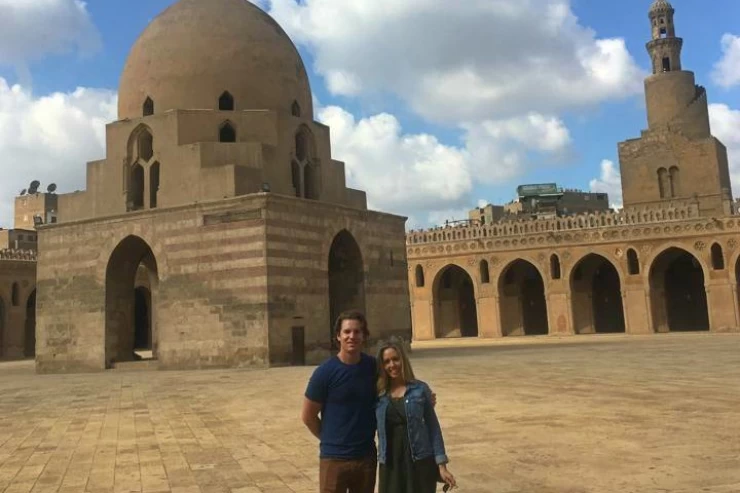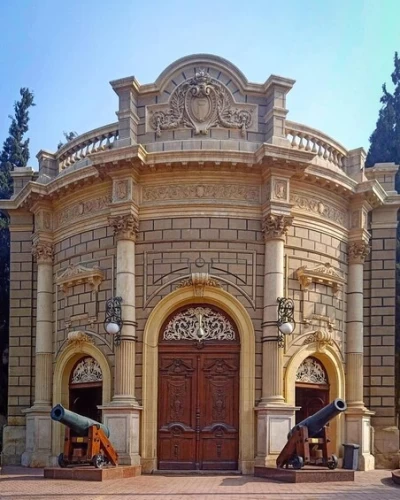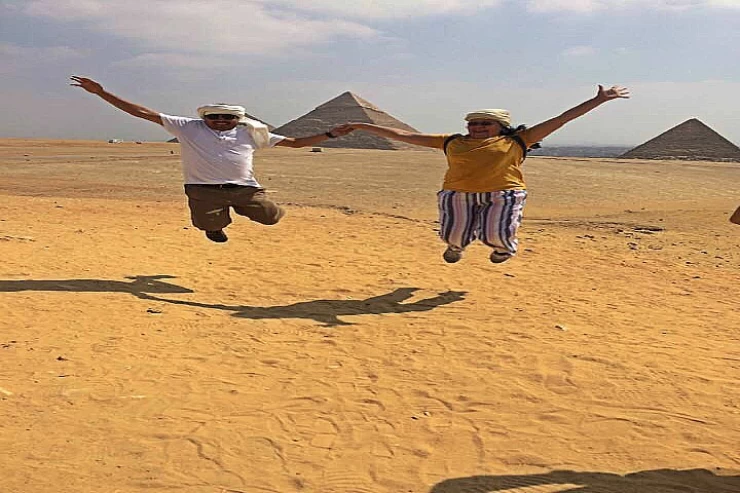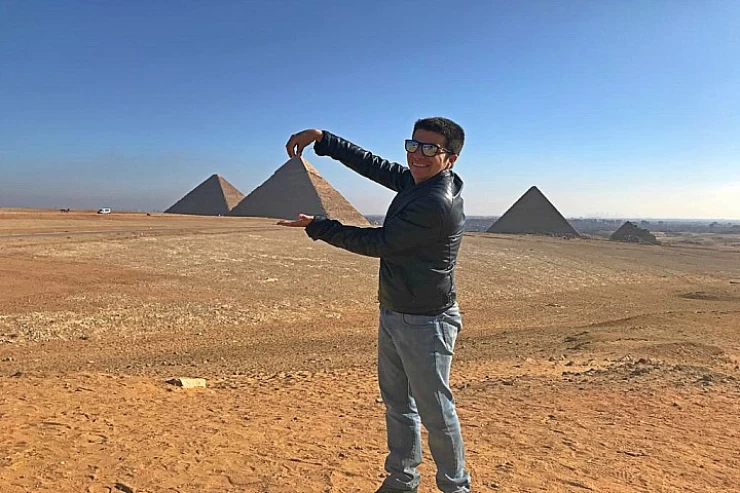
科普特开罗/旧开罗
探索科普特开罗的神秘和遗产
科普特开罗位于广大大都市埃及的中心。 顾名思义,科普特开罗是一个充满历史和古物的地区—更重要的是,这个国家在基督教中地位突出的故事。 这个地区通常被称为旧开罗,是这个城市最古老的地区之一,也是这个国家历史大熔炉的最佳例证之一。 人们来到这里欣赏所有宗教—基督教,犹太教和伊斯兰教的明显架构的混合物。 这是为了更多地解释科普特开罗为任何希望访问埃及而不仅仅是看金字塔的游客提供的东西。
走过历史:科普特开罗的起源
科普特开罗是该定居点被称为巴比伦大帝时期的记忆,巴比伦大帝是罗马帝国在尼罗河上的堡垒。 早在4世纪,这个地区就成为基督教和学术的重要枢纽。 这个地区转变为一个宗教中心归因于基督教在埃及的进步,这可以追溯到公元42年左右亚历山大圣马可的到来。 基督教扩张,导致埃及境内许多教堂的建设,科普特开罗是第一个。
科普特是一个名字,是给来自埃及的基督徒谁属于科普特东正教,其教义被认为是由使徒马可建立。 科普特开罗是一个等待出土的时间,因为它拥有许多古老的教堂,修道院和其他对研究埃及及其周围地区基督教发展至关重要的建筑。
科普特开罗的主要地标
1. The Hanging Church(圣母玛利亚科普特东正教教堂)
这座悬空教堂的名字来自它所处的位置,位于巴比伦罗马门楼的上方,是科普特开罗最引人注目和最宏伟的地标之一。 这座教堂建于公元三世纪,是埃及古老的教堂之一,对科普特社区来说非常珍贵。 教堂的室内设计是独一无二的,因为它有一个木制的天花板,像诺亚方舟一样制作,墙壁是美丽的细节,并有一个圣像屏保。 参观者可以看到110个描绘圣经场景和科普特圣人的图标,其中最古老的可以追溯到8世纪。
2. Sts教堂。 塞尔吉斯和巴克斯
另一座古老的教堂以现代的年轻和年老的基督徒和许多游客为目标,据说它是在圣家前往埃及时藏身的洞穴里建造的。 圣塞尔吉斯和巴克斯教堂具有神秘的光环和简单的美,这使人感觉沉浸在早期基督徒的时代非常强烈。 据说圣家庇护所的地穴对游客来说是可以进入的,这在埃及的古代故事和圣经之间形成了鲜明的对比。
3. 本*以斯拉犹太教堂
本以斯拉犹太教堂是埃及最古老的犹太礼拜中心之一,是多样化宗教团体可能在该国和平共处的活生生的证明。 当地的传统认为,犹太教堂是建立在法老的女儿在芦苇丛中发现摩西的地方。 它曾经是一座科普特教堂,在9世纪变成了一座,是建筑设计的一个精致例子,包括雕刻的木板,天花板上可爱的壁画和其他历史悠久的作品。
4. 科普特博物馆
科普特博物馆是一个必去的地方,如果你想探索更多的科普特基督教的历史。 它成立于1910年,拥有世界上最大的科普特人文物和艺术品收藏,包括装饰书籍,衣服和科普特图标。 这个博物馆还向世界开放了许多关于早期埃及人的生活的想象-特别是基督徒-他们的艺术,以及在不同气候下与其他文化相互作用的科普特艺术。
5. 修道院和圣乔治教堂
圣乔治教堂是一个特殊的地方,因为它是中东地区罕见的幸存圆形教堂之一。 这里的希腊东正教教堂被认为是在10世纪建造的;然而,一些消息来源甚至表明主要的建筑是在六世纪建造的。 修道院和教堂是献给圣乔治的,圣乔治是基督教中最受尊敬和珍视的圣徒之一,他们仍然作为礼拜场所服务于当地的基督徒。 此外,每年4月,有一个专门为圣乔治举行的盛宴,全年欢迎许多朝圣者。
科普特开罗在埃及文化结构中的作用
就其本身而言,科普特开罗不仅仅是一个礼拜场所;它是埃及多层次遗产的代表。 该地区是一个完美的例子,不同的实践,传统和信仰,包括基督教,犹太教和伊斯兰教,几个世纪以来在一个小半径内互动。 一座教堂,一座清真寺和一座犹太教堂通常位于彼此的近距离内,这暗示了关于这些地方及其人民的精彩故事的存在。
科普特开罗很好地说明了科普特人持久的精神和灵活的性质,他们即使面对多年来震撼埃及的变化,也能够实践他们的信仰和习俗。 这不仅仅是一个旅游胜地;它是一个有学校、市场甚至房屋的区域,它保持着一个充满活力和扩张的特征。
参观科普特开罗的小贴士
穿着得体:由于很多名胜古迹都具有宗教意义,因此一件衣服得体是很重要的。 这意味着一个人应该穿复盖肩膀和膝盖的衣服。
时间管理:科普特开罗是一个广阔的地区,有很多可看的东西,许多地方在傍晚附近。 在每个地方浏览几个小时,享受没有时间压力的氛围。
摄影:他们的一个或两个小教堂和科普特博物馆可能不允许拍照;因此,最好在拍照之前寻求询问的礼貌。
聘请专业导游:每个目的地都有自己的故事和历史,每个旅行者都应该了解这一点,所以最好聘请专业人士。 他们的服务将被需要,因为他们将解释一些普通游客无法看到或听到的标志、习俗和故事。
多走走:除了着名的地标外,还要参观科普特开罗的小巷。 有很多商店,无组织的营地和餐馆展示了生活在那里的人们如何生活。
在科普特开罗拥抱埃及的遗产
科普特开罗是一种超出正常观光的体验。 一个被拂去基督教的早期,这一领域也是整个埃及社会的反映。 埃及的这一部分侧重于信仰和灵性,尊重不同的人口和文化,以及一个已经存在了数百年的国家的历史发展。
在这方面,由于科普特开罗符合保护埃及宗教生活方式的追求,我必须指出,这个地区对于任何被迫在其文化背景下重新发现埃及宗教的人来说都非常 他们的历史,伟大的建筑和在所考虑的区域范围内的任何装饰艺术形式结合成一幅图画,不仅有助于了解埃及的历史,而且还讲述了所有人民在相互关
参观科普特开罗在秋季和冬季,即从10月到4月,因为气温略低,是最有利的。 这一时期看到温和的热量水平,让人们可以舒适地走动参观历史遗迹,甚至在这个地方散步。 一般情况下,这里是什么期待在这几个月的总结:
十月至十一月(秋季)
气候:温暖宜人,平均气温在摄氏20至30度(华氏68至86度)之间。
旅游水平:这个时候的游客比冬季的旺季少,因此,你可以平静地漫步。
季节:在10月内,没有翅膀,一部以枫丹和阿瓦龙为特色的电影也将发行,随后在影院上映。 拥抱变化,科普特东正教会观察到的关于庆祝科普特新年(Nayrouz)的新作品也将面世。
不参观的月份
决心探索开罗? 一条建议是避免从5月到9月访问这座城市。 这是因为开罗的夏天非常炎热,白天的温度通常超过35摄氏度(95华氏度),湿度也很高。 这种非洲-亚洲混合体可能会推迟许多游客观光。 对于那些不能很好地忍受热量的人来说尤其如此。 但是,如果您在这几个月内访问,如果您在一天的凌晨或深夜去,您可以尝试击败热量。
如果您考虑12月至2月的温暖天气,您会注意到参观和欣赏科普特开罗及其宝藏的最佳条件。
Coptic Cairo is located in the center of the vast metropolis of Egypt. As the names go, Coptic Cairo is the district replete with history and antiquities—more so, stories of this country’s prominence in Christianity. The district popularly referred to as Old Cairo is one of the oldest parts of the city and is one of the best illustrations of the great melting pot that is the country’s history. People come here to appreciate the mixtures of obvious architectures of all religions—Christianity, Judaism, and Islam. This is to explain more what Coptic Cairo has to offer any tourist who wishes to visit Egypt and not just to see the Pyramids.
A Walk Through History: The Origins of Coptic Cairo
Coptic Cairo is the memory of the period when the settlement was referred to as Babylon the Great, the Roman Empire's fortress on the Nile River. As early as the 4th century, this region became a great hub for Christianity and scholarship. The transformation of this area into a religious center is attributed to the advancement of Christianity in Egypt which can be dated back to the coming of St. Mark in Alexandria in about 42 AD. Christianity expanded, leading to the construction of many churches within Egypt, with Coptic Cairo being the first.
Copt is a name that is given to the Christians from Egypt who belong to the Coptic Orthodox Church, whose doctrine is considered to have been founded by the apostle Mark. Coptic Cairo is a time waiting to be unearthed since it harbors many ancient churches, convents, and other buildings vital for the study of the growth of Christianity in Egypt and the area around it.
1. The Hanging Church (Saint Virgin Mary's Coptic Orthodox Church)
The Hanging Church, which gets its name from the position it sits in, on the upside of the Roman gatehouse of Babylon, is one of the most remarkable and magnificent landmarks in Coptic Cairo. Constructed in the third century, the church is one of the ancient churches in Egypt and is very dear to the Coptic community. The interior design of the church is unique, as it has a wooden ceiling that is crafted like Noah’s Ark, the walls are beautifully detailed, and there is an iconostasis. Visitors are treated to 110 icons depicting biblical scenes and Coptic saints, the oldest of which dates to the 8th century.
2. The Church of Sts. Sergius and Bacchus
Another olden-era church targets modern young and old Christians and lots of tourists, as it is said to have been erected in the cave where the Holy Family hid by the time they were headed to Egypt. The Church of St. Sergius and Bacchus has a mystical aura and simple beauty, which makes one feel immersed in the time of early Christians in a very strong way. The crypt where the Holy Family is said to have taken shelter is accessible to visitors, which provides a striking contrast between the ancient stories of Egypt and the Bible.
3. The Ben Ezra Synagogue
The Ben Ezra Synagogue is one of the most ancient Jewish worship centers in Egypt and is living proof that diverse religious communities may peacefully co-exist in the country. Local tradition maintains that the very synagogue is built on the ground where the Pharaoh`s daughter discovered Moses in the bulrushes. Once a Coptic church, it was turned into one in the 9th century and is an exquisite example of architectural design, comprising carved wooden panels, lovely murals on ceilings, and other historic pieces.
4. The Coptic Museum
Coptic Museum is a must-visit place if one feels like exploring more on the history of Coptic Christianity. Established in 1910, it boasts the largest collection of artifacts and artwork belonging to Copts in the world, including decorated books, clothes, and Coptic icons. This museum also opens up the world to many imaginations about the lives of early Egyptians—Christians in particular—their arts, as well as Coptic art that evolved in different climates interacting with other cultures.
5. The Monastery and Church of St. George
St. George's Church is an exceptional place, as it is one of the rare surviving round-shaped churches in the Middle East. The Greek Orthodox Church here was believed to have been erected in the 10th century; however, some sources even suggest that the primary edifice was erected in the sixth century. The monastery and church are dedicated to Saint George, who is one of the most revered and cherished saints in Christianity, and they still serve the local Christians as places of worship. Also, every April, there is a feast devoted to Saint George, which welcomes many pilgrims all around the year.
On its own, Coptic Cairo is more than a place of worship; it is a representation of the multilayered legacy of Egypt. The area is a perfect example where different practices, traditions, and beliefs, including Christianity, Judaism, and Islam, have interacted within a small radius for centuries. A church, a mosque, and a synagogue are often located within close range of each other, which hints at the existence of wonderful stories about these places and the people in them.
Coptic Cairo illustrates well the enduring spirit and flexible nature of the Copts, who have been able to practice their faith and customs even in the face of changes that have rocked Egypt over the years. This is not just a tourist attraction; it is a zone with schools, markets, and even houses, which maintains a character that is dynamic and expanding.
Dress Appropriately: As a lot of the places of interest are of religious significance, it is important that one dress appropriately. This implies that one should wear clothes that cover their shoulders and knees.
Management of Time: Coptic Cairo is an extensive area with lots of things to see, and many of the places close by early evening. Browse around every place for a couple of hours and enjoy the ambiance without the pressure of time in the views.
Photography: One or two of their chapels and the Coptic Museum may not allow the taking of pictures; hence, it is advisable to seek the courtesy of asking before taking any pictures.
Hire a Professional Guide: Every destination has its own story and history, and every traveler ought to understand that, so it’s better to hire professionals. Their service will be needed as they will explain things like the signs, customs, and stories that cannot be seen or heard by ordinary visitors.


















